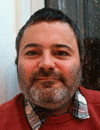Nadia Benkirane-Jessel
Research Director, French National Institute of Health and Medical Research (INSERM)Dr. Nadia Jessel is the Leader of the “Active Biomaterials and Tissue Engineering” team at INSERM (French National Institute for Health and Medical Research), UMR 977, Strasbourg. She received her Ph.D. from University Louis Pasteur, ULP, Strasbourg, France for the work on Development of pseudopeptides as synthetic vaccines. Dr. Jessel (Benkirane) then held a postdoctoral position in collaboration with the Institut Pasteur, Paris, France, working on Immunotherapy HIV, and another postdoctoral position on the application of modified peptides as vaccines against FMDV (Plum Island Animal Disease Center, ARS, USDA, Greenport, NY 11944-0848, USA). She joined the INSERM U595 in 2002 as a post-doc, and received the diploma to direct the research (HDR) in 2004. Dr. Jessel got the permanent position (CR1) in the INSERM 595 laboratory in 2004 and currently Research Director (DR2) in the INSERM 977 and heads the team. Dr. Jessel possesses expertise in diverse fields of molecular and cellular biology, immunochemistry, tissue engineering and biomedical engineering. In the last 10 years, she focused her research on the bio-functionalization of multilayered polyelectrolyte architectures with emphasis on the use of these architectures to induce specific cellular responses and gain control over cell proliferation and differentiation. Dr. Benkirane-Jessel is a co-author of 60 peer-reviewed publications in high impact factor journals (Proc. Nat. Acad. Sci. USA; Adv. Mater.; Adv. Funct. Mater.; Small; Nanoletters, Biomaterials, ACS Nano), 5 chapters reviews and 4 international patents, she is a regular referee for a number of scientific journals (Nature nanotechnology, Nature Materials, ACS nano, Biomaterials, Nanoletters…). She is under the contract (Interface INSERM/Clinic 2008-2013) and she got also (Prime d’Excellence Scientifique from the INSERM, 2010-2014). |  | | | Kattesh V. Katti
Director, Institute of Green Nanotechnology / Radiology / Cancer Nanotechnology Platform, University of MissouriProfessor Kattesh V. Katti is internationally recognized as a leader in the interconnecting fields of—chemistry, radiopharmaceutical sciences, nanotechnology/green nanotechnology and nanomedicine—for biomedical applications, specifically for molecular imaging and therapy of living subjects. The impact of Dr. Katti’s work is widespread, as his pioneering discoveries and strategies, originally developed in his laboratory in bioconjugate chemistry and Nanomedicine, and green nanotechnological tools, are used in many laboratories, industries and hospitals around the world. His contributions in nano and green nanotechnologies have already created a transformative progress in nanomedicine by aiding molecular imaging to help diagnose and manage therapy—all at the cellular levels. Dr. Katti’s ground breaking discoveries in green nanotechnology where he has demonstrated that biocompatible nanoparticles can be produced without the intervention of any toxic chemicals, through phytochemicals of high antioxidant capacities and tumor receptor specificities have created a new generation of molecular imaging and therapeutic nanoceuticals. His approach to green nanotechnology has furthered the scope of holistic and integrative medicine with implications in modulating signaling pathways allowing optimization of therapies targeted to tumor cells/regions without causing adverse toxic effects to normal cells. These original discoveries are expected to have a major impact on how molecular imaging and therapies will eventually be individualized to allow their greater success through theranostic approaches using radioactive nanoparticles, photothermal therapy using targeted nanoparticles and novel therapies involving phytochemicals. Myriad of such approaches developed by Dr. Katti are already impacting clinical translation through comparative oncology in realistic ways as new drugs are being validated for their efficacy in imaging and therapy using tumor bearing dogs where the disease mimics human conditions. In recognition of his original contributions, Dr. Katti has been awarded a number of international awards and citations which include: International Hevesy Medal Award (2015) for excellence in Nuclear Sciences; Elected to the fellowship of the National Academy of Inventors (2015); One of the ‘25 Most Influential Scientists In Molecular Imaging in the World’ award by RT Image, the ‘Father of Green Nanotechnology’ citation by the Nobel Prize Winner Norman Borlaug, Gauss Professorship—Hall of Fame—from the Gottingen Academy of Sciences, ‘Outstanding Scientists Fellows’ award and induction as a Fellow of the Academy of Science, St Louis—one of the oldest scientific academies of the world and many more. In 2013, Dr. Katti was elected as a fellow of the American Association for the Advancement of Science with a citation “for distinguished contributions encompassing nanoscale chemistry, particularly for ground breaking discoveries enabling application of nanotechnology concepts for biomedical applications”. His unprecedented discovery of the production of tumor specific gold nanoparticles through 100% green processes have been cited as the Editor’s choice in Nature, Future Medicine, in Science (AAAS), in Popular Science, by the Discovery Channel and have been highlighted in scientific/medical programs of the British Broadcasting Corporation (BBC, London). |  | | | Frederic Lagarce
Professor, University of AngersPr. Frederic Lagarce is a Pharmacist educated in the Universities of Paris XI and Angers in France. In the latter University he achieved a specialization in Hospital Pharmacy during 4 years and a 3 year PhD program. Since 2005, he has been working as a Hospital Pharmacist and was nominated assistant professor in 2008 and Professor of biopharmaceutics & Pharmaceutical technology in 2012. He started is research in 1999 in the lab of Pr. Jean-Pierre Benoit on microparticles . In the mid 2000’s he started to lead research programs on lipid nanocapsules for the oral and the pulmonary route mainly in the field of cancer therapy. Frederic Lagarce focuses his research on Bioavailability enhancement by playing on the interactions between the drug products (mainly nanosystems) and the living tissues. This field involves biological barrier crossing studies but also stability assessment of the active moieties and the formulation in vivo. The research area is thus at the frontiers of physiology, molecular biology, physical chemistry and pharmaceutical technology. Because of his position at the hospital, Frederic Lagarce is in strong interaction with the medical staff and this has an important influence on his translational research which can be shortened as “finding new answers to medical needs using innovative drug formulations”. |  | | | Gunter Oberdorster
Professor, University of RochesterGünter Oberdörster is Professor in the Department of Environmental Medicine, and he directed the University of Rochester Ultrafine Particle Center at the University of Rochester. He studies the toxicology of airborne environmental and occupational particles and nanoparticles. Prof. Oberdörster's work has shown that nanoparticles can induce greater inflammatory lung injury than larger-sized particles with the same chemical composition. His research investigates effects and underlying mechanisms of ultrafine particle-induced lung injury as well as effects in secondary organs such as the cardiovascular and central nervous systems.
Prof. Oberdörster also investigates the unique biokinetics and toxicological potential of engineered nanoparticles, and the propensity of these particles of different shapes, chemistries, and surface characteristics to translocate from the site of deposition in the respiratory tract to extrapulmonary organs such as heart, liver, bone marrow and brain. Objectives of these studies are the examination of the influence of physicochemical properties of nanoparticles on their effects and biokinetics with the ultimate goal of risk extrapolation to humans.
Prof. Oberdörster is recipient of several scientific awards and has served on many national and international advisory committees including the EPA's Science Advisory Board committees, the Board of Scientific Counselors of the US National Toxicology Program, the NRC's Committee on Toxicology, the World Health Organization, the IUPAC Commission on Toxicology, the ad hoc Expert Group on Chemicals Bureau of the European Commission, OECD Working Group and an advisory panel of the German Research Association. He has served on NRC's Committee on Research Priorities for Airborne Particulate Matter, and for a Research Strategy for EHS aspects of engineered nanomaterials. He is on the editorial boards of the Journal of Aerosol Medicine; Particle & Fibre Toxicology; Nanotoxicology; International J. Hygiene & Environmental Health; Nanomaterials and the Environment, and Associate Editor of Environmental Health Perspectives.
|  | | |
|

 Add to Calendar ▼2013-04-11 00:00:002013-04-12 00:00:00Europe/LondonNanomedicine 2013Nanomedicine 2013 in Barcelona, SpainBarcelona, SpainSELECTBIOenquiries@selectbiosciences.com
Add to Calendar ▼2013-04-11 00:00:002013-04-12 00:00:00Europe/LondonNanomedicine 2013Nanomedicine 2013 in Barcelona, SpainBarcelona, SpainSELECTBIOenquiries@selectbiosciences.com